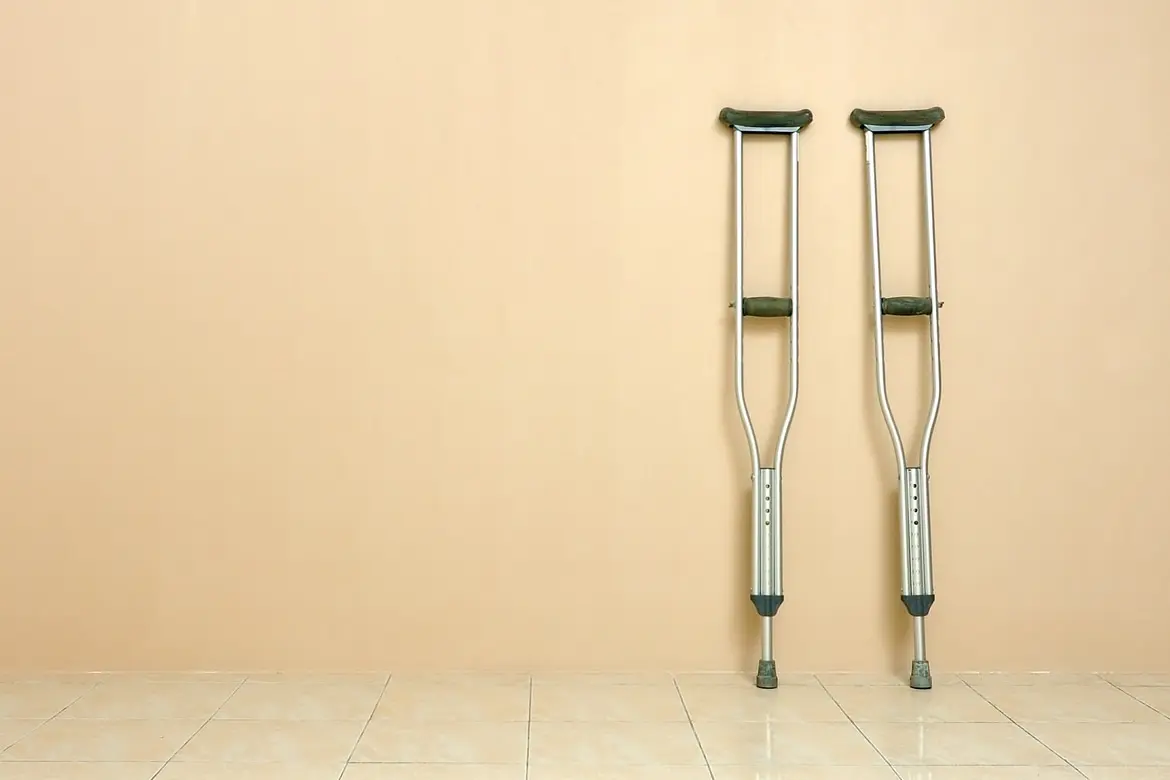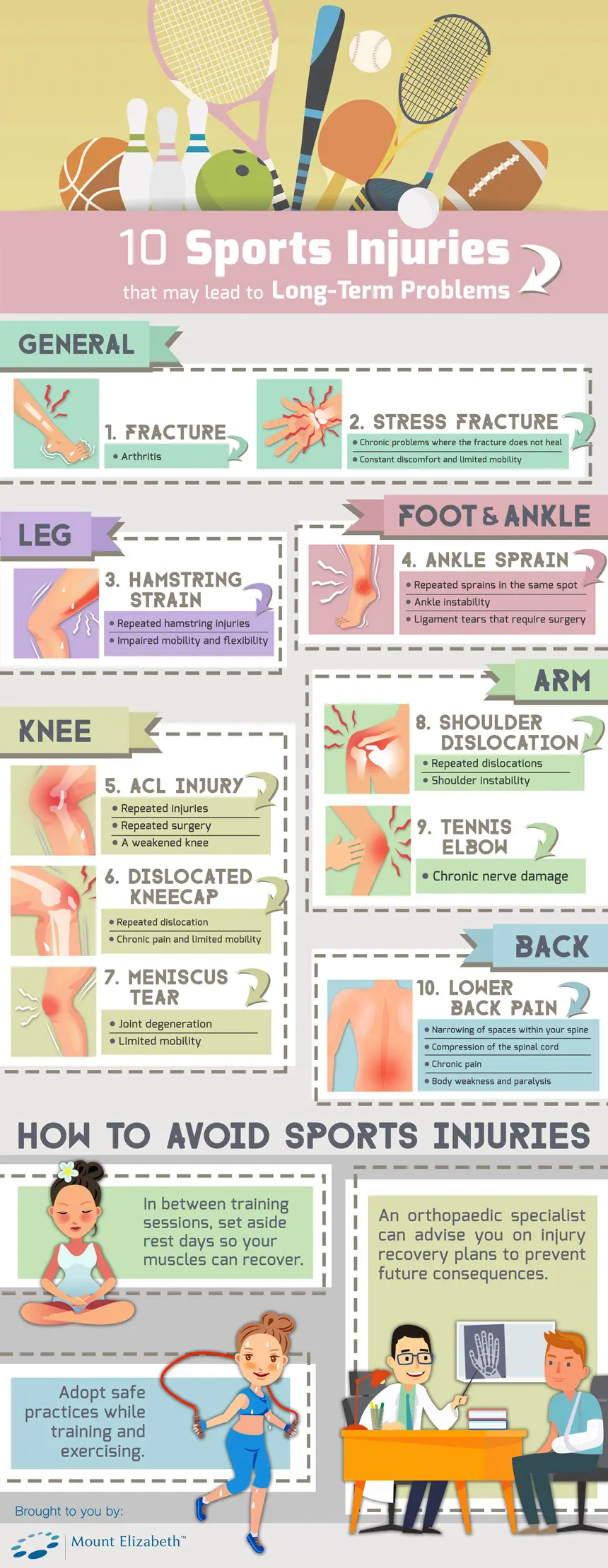Fracture: Repeated injuries to the same bone, or a fracture that occurs near or through a joint, increases your risk of arthritis or permanent stiffness in the future.
Stress fracture: If not properly managed, it could lead to larger, harder-to-heal stress fractures, chronic problems where the fracture does not heal, constant discomfort and limited mobility.
Hamstring strain: It could lead to repeated hamstring injuries, and limited mobility and flexibility.
Ankle sprain: It could increase your risk of repeated sprains in the same spot, ankle instability or ligament tears that require surgery.
Anterior cruciate ligament (ACL) injury: If not properly treated, it could lead to repeated injuries, repeated surgery and a weakened knee.
Dislocated kneecap: It could increase your chances of repeated dislocation, and lead to chronic pain and limited mobility.
Meniscus tear: It could lead to joint degeneration and limited mobility.
Shoulder dislocation: If not properly treated, it could increase your risk of repeated dislocation and shoulder instability.
Tennis elbow: If not properly treated, it could lead to chronic nerve damage.
How to avoid sports injuries
- In between training sessions, set aside rest days so your muscles can recover.
- Adopt safe practices while training and exercising.
- Consult an orthopaedic specialist who can advise you on injury recovery plans to prevent future consequences.













